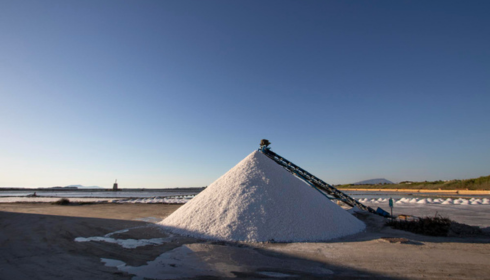If you’ve ever touched glassware after a wash and felt that chalky residue, you already know what hard water can do. It’s not just about spots—it’s about scale building up inside pipes, appliances, and even your skin’s moisture barrier. That’s where water softeners step in. But lately, something interesting has been happening in homes and eco-conscious spaces: people are trading the old rock and pellet salts for something gentler, more natural, and yes, more sustainable — the solar salt water softener.
This isn’t just a fancy buzzword for “salt made by the sun.” It’s a subtle shift that’s changing the way we think about treating water, one household at a time.
The Magic Behind the Sun-Dried Crystals
Most people don’t think about how salt is made. But if you picture a sunbaked flat where seawater slowly evaporates under warm skies, leaving behind pure sodium chloride crystals, that’s pretty much it. The process sounds poetic — and in a way, it is.
What makes solar salt special is its simplicity. No chemical refining, no excessive energy usage, no carbon-heavy mining machinery. It’s created through evaporation ponds, harnessing nothing but sunlight and wind. The result is high-purity salt that dissolves efficiently in water softeners without leaving behind heavy residues.
That purity matters. It keeps your softener system cleaner for longer, reduces maintenance, and offers better performance in areas with moderate to hard water. But beyond the technical side, there’s something satisfying about knowing your home’s water treatment uses a resource shaped by nature itself.
Cleaner Water, Softer Skin — and a Kinder Planet
Switching to solar water softener salt isn’t just about protecting your dishwasher or coffee maker. It’s also about protecting what’s downstream — literally.
Traditional rock salts often contain insoluble minerals that can leave behind sludge in softener tanks. Over time, this waste builds up and can eventually wash out into the environment. Solar salt, being purer and naturally processed, minimizes this problem.
Plus, when you think about energy, the difference is striking. Producing mined salt takes machines, fuel, and a good chunk of carbon output. Solar salt? Just time, sunlight, and a bit of patience. It’s the small eco-friendly decision that doesn’t demand compromise — you still get soft water, just without the extra guilt.
And the benefits show up in the everyday too. Softer skin after a shower. Brighter clothes. Fewer streaks on your glassware. It’s all part of the quiet chain reaction that starts with cleaner water.
Real-Life Payoff You Can Feel (and See)
It’s easy to roll your eyes at sustainability trends — not every “green” product delivers on its promises. But in this case, people notice a genuine difference. Homeowners often talk about how much longer their softeners run before needing a clean-out, or how their water feels smoother after switching to solar salt.
The science is simple: the purer the salt, the more effectively it exchanges ions during the softening process. Fewer impurities mean more efficiency. That means you’re not just saving energy; you’re saving money on maintenance, regeneration cycles, and even water usage over time.
And while the shift may seem small — one type of salt for another — these small swaps add up. Especially when multiplied across millions of households trying to live just a little bit lighter on the planet.
How to Choose the Right Solar Salt Product
When shopping for solar salt, you’ll notice a few variations: crystals, pellets, and even compacted cubes. The form you choose depends on your water softener system and how hard your water really is.
- Crystals are ideal for areas with moderate hardness and work well in most standard softeners.
- Pellets dissolve more slowly, making them a solid choice for higher water usage or larger families.
- Compacted solar salt products reduce bridging (when salt sticks together in a hard clump), ensuring smooth regeneration cycles.
A simple way to test quality? Drop a piece in water. High-quality solar salt should dissolve cleanly without leaving residue at the bottom. If it does, that’s your green light.
The Shift Isn’t Just About Salt — It’s About Mindset
Every time you make a home upgrade that’s both efficient and eco-conscious, you’re sending a quiet message: comfort and sustainability don’t have to be opposites. The solar salt water softener is proof of that. It doesn’t demand new habits, fancy installations, or lifestyle changes. It just slots into what you’re already doing — softening your water — and does it better.
Maybe that’s what’s so appealing about it. It’s not a grand overhaul, just a smarter version of something familiar. And in a world that often feels obsessed with extremes, that balance is refreshing.
The Final Thought: Small Crystals, Big Impact
Sometimes, the things that change our daily lives aren’t flashy innovations or complicated gadgets. They’re quiet shifts — like choosing a naturally made salt that softens your water and lightens your environmental footprint in the same breath.
When you run your fingers over a clean glass or notice your laundry feeling softer, you probably won’t think about the sun, the wind, or the slow evaporation ponds that made it possible. But maybe you should. Because in that simple, invisible process lies a reminder that sustainability doesn’t always mean sacrifice. Sometimes, it just means making a better choice — one crystal at a time.

